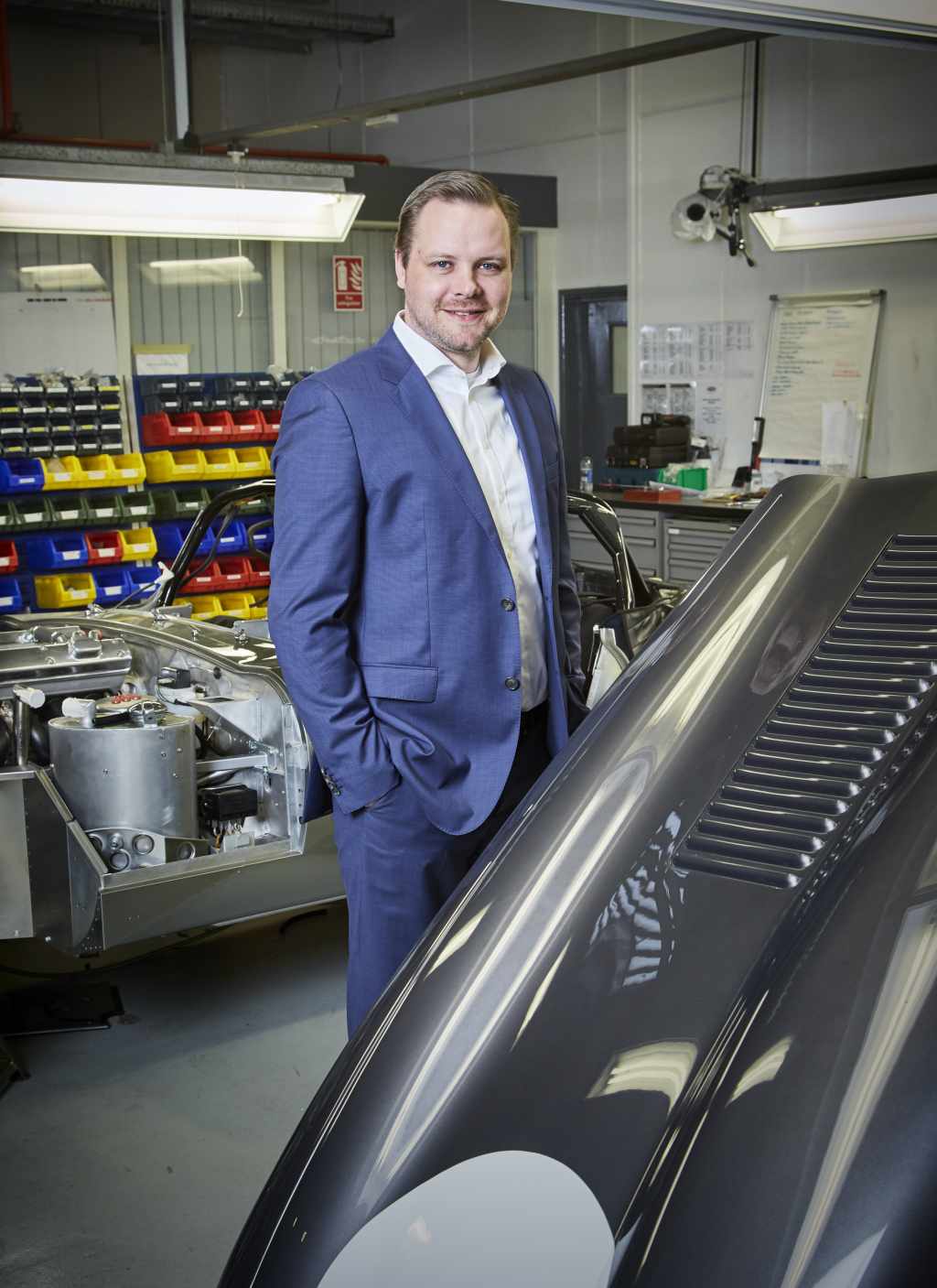
RE-CREATING AN ICON
31 May 2016
What has been your biggest hurdle in recreating these nine new XKSS cars?
I think our main challenge has been getting the form, or the shape, of the car absolutely right. These were cars that were hand‑formed and each of the 16 originally built was slightly different. We did manage to track down all the original drawings, which have helped us immensely, but drawings don’t tell you how the shape was created. So we borrowed two original cars from owners and scanned the lines digitally. The bodies we are creating are quite remarkable; I’m really impressed at what the team has achieved.
Are you recreating all the parts?
We are recreating almost everything. That is what is taking so much time and effort; making sure everything is accurate. We were fortunate, however, to find an original, unused D‑Type engine block in the warehouse of a Jaguar specialist in London. It was still in its original greased paper wrapping. We bought it from them and used it to create the die cast to build the new cylinder blocks. Otherwise we would have had to remove an engine from one of our D‑Type cars to strip down to use as a template. That’s not something we wanted to do.
How long will each car take to build?
As you’d expect, the process is labor‑intensive. We’re looking at three people working three months to build each car. But that doesn’t include all the exhaustive work that has gone into researching and creating all the different components. The plan is to build two cars at a time and, just like the originals, we’ll build them up completely without paint, and only at the end paint them.

When will the first cars be delivered?
We’re looking at February or March next year, with the last of the nine cars being delivered some time in 2018. We’ll build an engineering car ‑ we’ll call it ‘Car Zero’ ‑ that won’t be sold. That will be unveiled towards the end of this year and, as with our continued Lightweight E‑Type project ‑ we’ll use that to make sure everything fits right and it drives right.
Will customers be able to customize their cars?
There are certain things we will offer. For example, the original car didn’t have a fuel gauge ‑ it was based on a race car. So we could hide one beneath the dashboard. Some of the cars also had a luggage rack while others, like Steve McQueen’s car, had a rolled‑up tonneau cover instead of a folding top. Originally, there were five color choices; British Racing Green, black, red, gray and Old English White. But personal preferences with respect to the color will be respected beyond that list.

Jaguar To Build Iconic XKSS ‑ 'The World's First Supercar'
Tell us about your background?
I joined Jaguar Land Rover in September last year. Part of the reason for getting the job was the 1969 Series 2 E‑Type Coupe I bought in 2009 and had started to get it restored. I’m from Northern Germany and at the time was working in the forklift industry. In 2010, I was transferred to China and during the time I was there, I came up with the idea to bring E‑types into China for the Chinese market. I thought it might be a good idea to get an official, “OK” from Jaguar Land Rover, so in 2013; I emailed John Edwards, the head of Jaguar Land Rover Special Operations. He politely declined, but suggested we talk. I met him, and a year and a half later, he offered me the job to head and build Jaguar Land Rover Classic. I’ve always had a passion for Jaguar; my very first car as a student at age 19 was a Jaguar‑built Daimler 2.5 V8.
So how many of the nine $1.5 million‑plus XKSS cars are still available?
We’re very pleased to say they’ve all been sold to very happy, enthusiastic, and expectant customers.